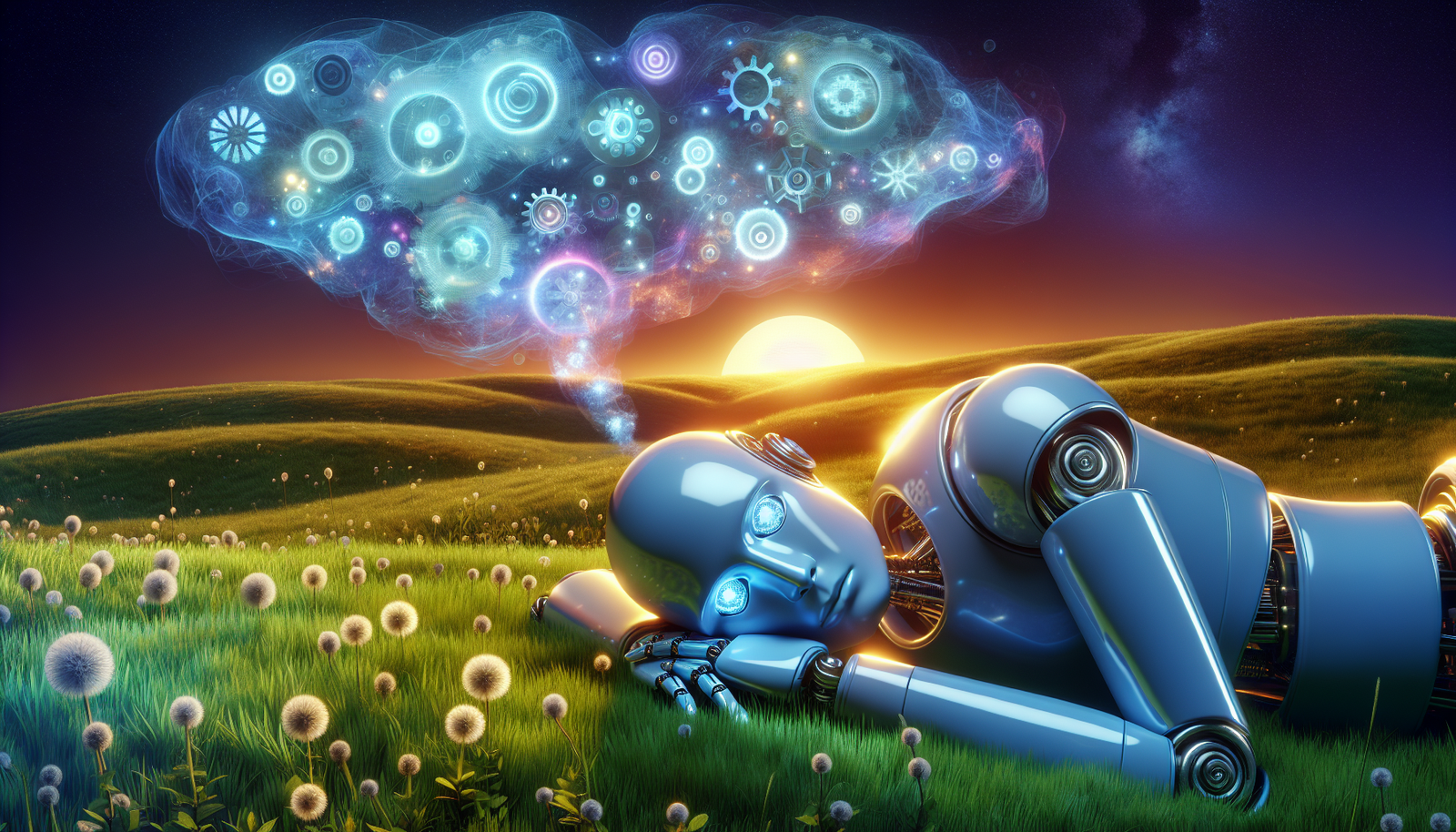The advances in robotics prompt the scientific community to consider the ability of machines to *learn from experience*. Dreams, often viewed as a human exclusivity, raise fascinating questions: *can robots dream too?* This phenomenon could transform their learning, making them more adaptable and efficient. The theory of machine dreaming emerges, linking simulation to reality. The implications of this learning capability alter the way artificial intelligence transcends its limitations.
The Learning Perspectives of Robots through Dreaming
Researchers at MIT have developed an innovative approach allowing robots to learn from their “dreams.” This method relies on the use of generative artificial intelligence to create varied and realistic training environments, supporting the idea that machines can acquire skills without direct interactions with the real world.
LucidSim: A Technological Revolution
The system, named LucidSim, combines physical simulation and generative artificial intelligence models. This synergy aims to solve the previous major challenge for robots: the gap between simulated environments and the real world. According to Ge Yang, a postdoctoral researcher at MIT involved in the project, “the simulation-reality gap has long complicated robot learning.”
The Challenge of Skill Transposition
Initially, robot learning was based on depth sensors that simplified learning environments. By doing so, robots did not grasp the innate complexities of the real world. With LucidSim, an innovative model generates descriptions of varied environments, which are then transformed into images by generative models. A physical simulator ensures that the produced images obey the laws of physics.
A Creative Momentum Born from Daily Life
The idea for LucidSim arose during an informal conversation in Cambridge. The creators realized that to teach robots to improve their capabilities through human feedback, a first model based solely on vision was necessary. This introspection catalyzed the innovation process, leading to an effective method for creating training data.
The Data Creation Process
To generate realistic data, the team extracted depth maps and semantic masks from simulated scenes. Their discovery? Excessive control over image content led to a homogeneity of images, thereby reducing diversity. Using ChatGPT allowed them to diversify textual descriptions and generate varied visuals.
The Concept of “Dreams in Motion”
For robots to have immersive “experiences,” researchers developed a complementary technique called Dreams In Motion. This innovative system calculates the movement of pixels in a generated image, thus creating short videos that simulate real-time interactions, taking into account the 3D geometry of the scenes.
An Evaluation and Surprising Results
LucidSim was evaluated against the conventional method of expert supervised learning. Robots trained by an expert succeeded only 15% of the time, whereas those benefiting from LucidSim achieved a success rate of 88% after simply doubling the size of their data set. The behavior of “learning” robots significantly improved.
Potential Applications Beyond Locomotion
Researchers are considering applying LucidSim beyond the fields of quadrupedal movement and parkour. One of the most promising applications lies in mobile manipulation, where robots interact with objects in open spaces. Color perception is a crucial aspect of these tasks. Optimizing data collection in virtual environments could revolutionize this aspect.
Warnings from Experts
Shuran Song, a researcher at Stanford University, warns about the persistent challenge of visual fidelity. She acknowledges that the LucidSim framework offers an elegant solution to this challenge by leveraging generative models. This could expedite the deployment of robots trained in virtual environments to real-life tasks.
Social and Ethical Impacts of Machine Learning
Advances in robotics raise ethical questions regarding machine consciousness. Some experts foresee social disruptions depending on how this consciousness is perceived by society. Controversial projects, such as those contemplated by Elon Musk, illustrate the concerns surrounding these emerging technologies.
Visit this site for information on technological revolutions and setbacks, and how this influences modern societies.
The dialogue surrounding these technologies is expected to evolve, questioning our perceptions and expectations regarding increasingly intelligent machines.
Frequently Asked Questions
Can robots really dream like humans?
While robots cannot dream exactly like humans, researchers are working on systems that allow them to learn from simulations akin to dreams. These processes, like LucidSim, utilize virtual environments to enhance robot learning.
How do robots use dreams to improve their learning?
Robots can generate learning scenarios through simulations that mimic dreams, enabling them to practice skills without needing real-world data. This offers a diverse and realistic learning opportunity.
What are the advantages of dream systems for robot learning?
Dream systems offer several benefits, including reducing reliance on actual demonstrations, creating a wide range of learning environments, and improving robot performance in various tasks.
How does the technology behind robot learning through dreaming work?
The technology combines physical modeling and generative artificial intelligence to create virtual learning environments. This allows robots to train in situ, facilitating the transfer of acquired skills to real-world environments.
Can robot dreams include realistic experiences?
Yes, thanks to advanced generative models, robot dreams can simulate experiences that replicate real situations, making their learning more relevant and useful for interactions in the real world.
What types of skills can robots learn by dreaming?
Robots can learn a variety of skills, ranging from locomotion to object manipulation to navigation in complex environments. These skills can then be applied to real tasks.
Are there limitations to robots learning through dreaming?
Yes, although effective, dream learning systems can be limited by the quality of simulations and their ability to cover unforeseen situations that may arise in the real world.
How do researchers test the effectiveness of dream learning systems for robots?
Researchers conduct comparative tests between robots trained through dream simulations and those learning from human demonstrations. The results measure the robots’ abilities to succeed in specific tasks to evaluate the effectiveness of the methods.






